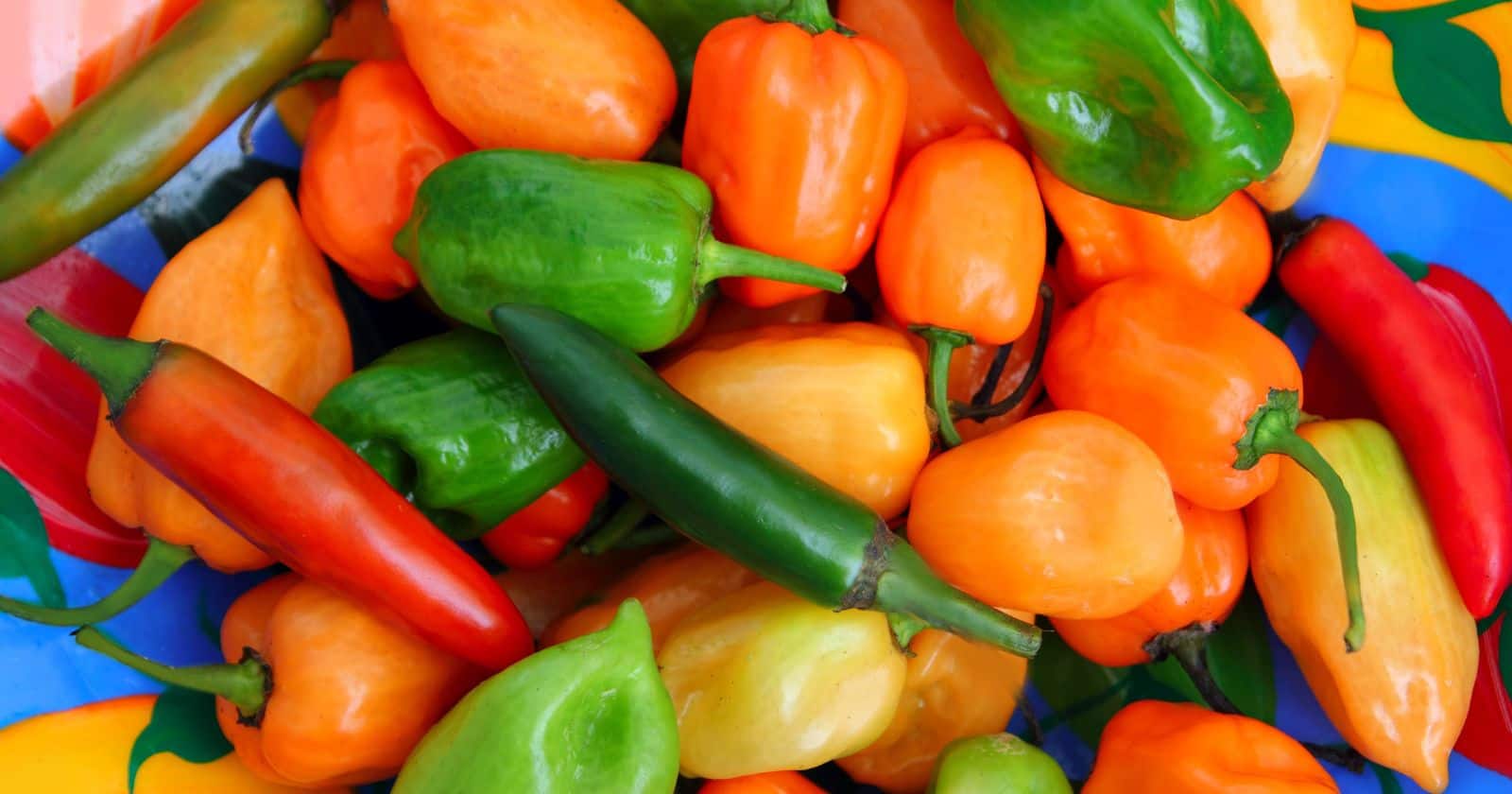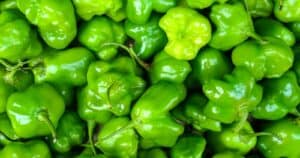The debate between serrano vs. habanero peppers has raged for ages. Chiliheads and
The clear winner is the habanero. With up to 350,000 Scoville Heat Units, habaneros blast serranos out of the water when it comes to pure spiciness. Habs can be over 10 times hotter than serrano peppers!
But the serrano holds its own with great flavor. Their bright, grassy taste shines in Mexican cuisine. So serranos still take silver as a tasty medium-heat pepper.
While habaneros claim the heat crown, both peppers have unique virtues. This article explores their Scoville ratings, growing conditions, and best uses. After getting the facts, you’ll know exactly how to use serranos and habaneros to add the ideal
Habaneros: The Hottest Peppers in the Ring
When it comes to heat intensity, habanero peppers reign supreme over serranos. With a blistering Scoville rating ranging from 100,000 up to 350,000 Scoville Heat Units (SHU), they are the hottest pepper in this battle.
In comparison, serrano peppers typically fall between 10,000 to 23,000 SHU. That makes habaneros a scorching 10 to 35 times hotter! Brace your taste buds, the habanero is no lightweight contender.
A Hotshot with Fruity Flavors
Beyond brute spicy force, habaneros also wow with their distinctive fruity, floral flavor profile. Notes of citrus, pear, apricot, and even hints of sweetness come through in each pepper.
This complex medley makes habaneros perfect for:
- Hot sauces and salsas
- Marinades and rubs
- Jerk dishes and other Caribbean cuisine
- Adding heat and tang to stews and soups
Their tropical essence shines when paired with ingredients like mango, pineapple, coconut, and lime.
Taming the Flames of the Habanero
For pepper rookies, habaneros can seem too hot to handle. But you can temper their extreme
- Remove the seeds and white inner ribs – they contain the most heat!
- Use less than a recipe calls for and adjust up slowly to your taste
- Combine with creamy, sweet, or acidic ingredients to balance the burn
- Roast or grill them to mellow the flavor
- Opt for milder pepper varieties like ornamental habaneros
With some caution, anyone can safely enjoy habanero heat.
Serrano Peppers: A Medium Spicy Contender
Now onto the serrano – a versatile pepper popular in Mexican regional cooking. With a Scoville range of 10,000 to 23,000 SHU, serranos pack higher heat than jalapenos but less than habaneros. Their heat hits you fast, especially when eating the seeds.
A Bright, Grassiness with a Spicy Kick
Beyond the
As they ripen from green to red, serranos develop sweeter, fruitier notes. But the green younger peppers offer vibrant flavor perfect for:
- Fresh salsas, pico de gallo, and guacamole
- Marinating proteins like chicken, fish, and pork
- Adding heat to soups, stews, and chilis
- Serving raw and sliced as a topping on tacos and pizza
Due to their medium spicy level, serranos allow other ingredients to still shine through.
Controlling Serrano Heat in Your Kitchen
Compared to the habanero, serrano peppers offer a more manageable, slow burn. But you can further control their heat by:
- Removing the ribs and seeds
- Cutting back on the amount used in a recipe
- Pickling or roasting them to mellow their
spice - Opting for green serranos, which tend to be milder than red
When handled carefully, serranos add the perfect pop of heat to your favorite Mexican dishes.
Heat Intensity: What Are Scoville Units?
By now you know that habaneros far outrank serranos on the heat scale. But how exactly are pepper heat levels measured?
The Scoville scale dates back to 1912, when chemist Wilbur Scoville created a test to measure chili pepper
The scale calculates the concentration of capsaicin, the chemical compound that gives hot peppers their heat. The ratings are measured in Scoville Heat Units (SHU), with higher numbers meaning more intense
To measure a pepper’s SHU, here’s the process:
- The peppers are dried and ground into an extract.
- The extract is diluted in sugar water until a panel of tasters no longer detects heat.
- The pepper is rated based on the dilution required to remove the heat.
The ratings provide a guide to compare heat levels between pepper varieties. But growing conditions, individual plants, and preparation methods also influence the heat. The Scoville scale gives an approximation, not an absolute number.
Growing Conditions Impact Pepper Heat
Why do some habanero peppers blast fiery heat, while others offer just mild
Several key factors during the growing process help shape their Scoville ratings:
Climate and Environment
- Hot, dry weather brings out more heat.
- The right balance of sun, water, and soil nutrients boosts
spice levels. - Plants under stress tend to produce hotter peppers.
Maturity Level
- Unripe peppers tend to be milder.
- As peppers ripen, they develop higher capsaicin concentrations.
Pepper Variety
- Some pepper breeds naturally contain more heat compounds.
- Varieties like Red Savina habaneros test higher on the Scoville scale.
Capsaicin Content
- All else being equal, some individual peppers produce more capsaicin.
- Higher capsaicin concentration = a hotter heat experience.
Soil conditions, climate, maturity, and natural genetics all combine to influence heat in habanero and serrano peppers. But with optimal growing strategies, farmers can consistently cultivate spicy peppers year after year.
Declaring the Hot Pepper Champion
After reviewing all the evidence, the habanero emerges as the undisputed hot pepper heavyweight champion!
With record-breaking Scoville units, fierce heat, and the signature tangy, tropical flavor, habaneros deliver a scorching experience unlike any other pepper. They aren’t for casual
Serrano peppers take second place in this showdown. As a medium-hot pepper packed with bright, grassy flavor, they fill a role in Mexican cooking that habaneros can’t match. Their manageable spiciness makes serranos accessible for cooks of all skill levels.
While habaneros win for sheer heat intensity, both peppers have unique virtues. Understanding their differences helps you select the right pepper for your recipes and heat preferences. A hot pepper toolbox should include habaneros, serranos, and other chilies for maximum flavor impact.
The next time you need to





